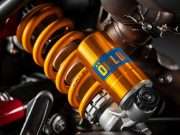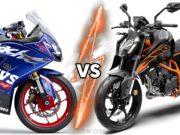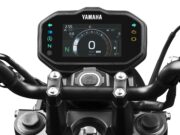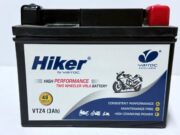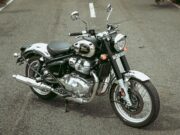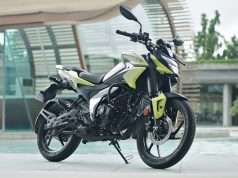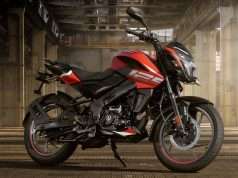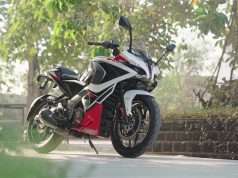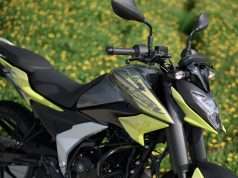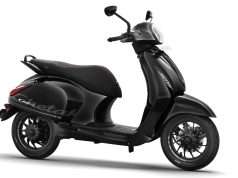Bajaj has quietly but effectively gone back to the drawing board with the 2025 Pulsar NS400Z. With a price hike of just ₹7,000, the updates may seem subtle at first glance, but they make a noticeable difference in how this streetfighter feels on the road. The NS400Z was already a standout for the sheer value it packed — a 40 HP motorcycle at a price where you’d typically be choosing between a sharp 150cc or a practical 250cc. But to make that price work, Bajaj borrowed heavily from its own shelf. Think Dominar 400’s engine and chassis paired with NS200 parts and body panels. Effective? Yes. Cohesive? Not quite.
One of the biggest drawbacks back then was the tyres — bias-ply, with a narrow rear that simply didn’t do justice to the performance. Brakes weren’t great either, thanks to basic organic pads. And the Sport mode? It promised a lot but never really delivered the punch expected from a 40hp setup.
Now though, the NS400Z has been sharpened — in places that matter.
Key figures:
| Spec | Value |
|---|---|
| Engine | 373cc single-cylinder liquid cooled |
| Power | 43 HP @ 9,000 rpm |
| Torque | 35 Nm @ 7,500 rpm |
| 0-100km/h | 6.4s |
| Top speed | 157 km/h |
| Kerb weight | 174 kg |
| Fuel capacity | 12L |
| Seat height | 805 mm |
| Ground clearance | 165 mm |
Design & Features: Familiar Looks, Functional Tech
At first glance, you might not spot the changes. The aggressive front end with its ‘Z’-shaped DRL and mono projector headlamp remains — still a strong identity marker. The side profile is tight and muscular, but from the rear, it’s hard to tell it apart from the NS200, thanks to shared components like the swingarm and tail-light. Bajaj has stuck to what works — but perhaps a little too much.
Tech-wise, there’s more to talk about. Ride-by-wire, traction control, and four ride modes — Road, Rain, Off-road, and the now improved Sport. The big news? Sport mode now gets a software-based bi-directional quickshifter, which Bajaj calls Sport-Shift. Instead of using traditional sensors, it relies on clever software logic using the gear-position sensor and gear drum — keeping costs low while delivering smooth clutchless shifts when you are happy with the throttle. It works surprisingly well. Upshifts are snappy, downshifts are rev-matched. Just don’t expect the same finesse at lower RPMs — it’s designed for spirited riding, hence limited to Sport mode.

Ride & Handling: Sorted Tyres, Sharper Dynamics
The biggest transformation is where rubber meets road. The NS400Z now rolls on radial Apollo H1 tyres, with a chunkier 150-section at the rear. Grip levels are significantly better — whether it’s carving corners or navigating wet roads, confidence has taken a leap.
The suspension setup — 43mm USD forks at the front and a monoshock at the rear — mostly does the job. The front feels composed, but the rear still has a stiff edge, especially over repeated bumps. Braking, on the other hand, is much improved. The switch to sintered pads has added bite and feel. The vague, mushy lever action from before is gone, replaced by braking you can trust — and that’s amplified by the confidence these new tyres inspire.
ABS and traction control remain unobtrusive but ready. Existing NS400Z owners can upgrade to the sintered pads, radial tyres and wider rear without needing a new wheel. That’s a neat touch.
Performance & Efficiency: More Muscle Where It Matters
The spec sheet now reads 43 HP in Sport mode — up from 40 — and a higher redline at 10,700rpm (earlier 9,700rpm). Throttle response is cleaner, crisper, and more connected. The engine feels freer, more willing to rev, and finally delivers the urgency it always hinted at.
The bump in output comes thanks to revised internals: new valve timing, cam profiles, larger intake duct, and a forged piston for better thermal efficiency. It’s not KTM-aggressive — and that’s okay — because the Pulsar now has its own style of performance: strong, predictable, and easy to tap into.
ARAI figures haven’t changed — it still claims 28 kmpl — but that’s with more power under the hood. In the real world, it should still return city mileage in the high 20s and a bit more on the highway.

A Thoughtful Upgrade That Hits the Mark
At ₹1.92 lakh (ex-showroom, Delhi), the Pulsar NS400Z continues to deliver incredible bang for the buck. But this time, it’s not just value — it’s competence.
Bajaj could’ve slapped on new graphics and called it a day. Instead, they actually listened. They gave the NS400Z grippier tyres, brakes that respond like you expect, a quickshifter, and finally — an engine tune that unleashes its full potential. Sure, it’s not a ground-up redesign. The rear suspension could be a bit more forgiving, and the instrument cluster still feels like it belongs to another era. But those are small gripes.
What matters is how the bike feels now. It feels sorted. It feels complete. It feels like someone cared.
For riders looking to step into the 400cc segment without breaking the bank, this Pulsar isn’t just a logical choice — it’s an emotional one. It doesn’t scream for attention, but once you ride it, it quietly earns your respect.






